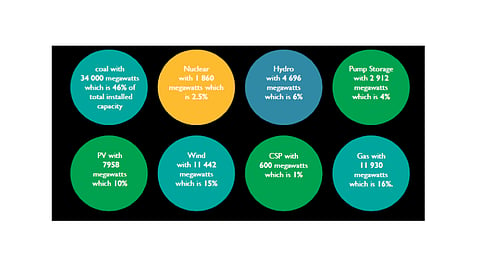

Giving a cue to developed nations in the west for their energy transition ambitions, South Africa has decided to slash its nuclear power plans. Its current installed nuclear power capacity of 1,860 MW will suffice the country, as the government has no plans to increase nuclear capacity until 2030. Originally it was looking to expand nuclear to 9.6 GW. Instead, now it wants to focus on renewables.
The previous government under Jacob Zuma, who faces multiple corruption charges, was keen on building nuclear capacity. A Reuters report says Zuma had plans to grant the deal to Russia's Rosatom. However, current South African President Cyril Ramaphosa trashed any nuclear plans calling them too expensive.
It has now come out with a detailed trajectory for the country's energy expansion. The country's Energy Minister Jeff Radebe released the cabinet's approved draft Integrated Resource Plan (IRP 2018) for public comments and feedback. Once implemented, it will replace the IRP 2010.
According to IRP 2018, the government plans to add to the current installed capacity, 1 GW of coal, 2.5 GW of hydro, 5.67 GW of PV, 8.1 GW of wind and gas each by the year 2030.
This would take the installed capacity mix by 2030 to 34 GW of coal, which will account for 46% of the total installed capacity. Nuclearwill remain at 2.5% of the total mix with 1.86 GW; hydro power will be at 4,696 MW, PV will comprise 10% of total capacity with 7,958 MW and 600 MW is supposed to come from CSP or 1%; wind will reach 11,442 MW equal to a 15% share; pump storage will have 2,912 MW and a 4% share, while gas with 11,930 MW will contribute 16% to the total.
The IRP 2018 is available for public comments for a period of 60 days. For further information, consult Department of Energy website.
The new government in South Africa has been already gaining credibility in the renewable community as it got the country's utility Eskom to sign PPAs for 27 renewable energy projects for 2.3 GW of clean energy capacity. Another 1.8 GW of renewables will be tendered in the next round of the Renewable Energy Independent Power Producers Procurement Programme (REIPPPP) in November (see South Africa To Launch New RE Bid Round).
.png?w=50&fm=png)